Roundabouts
Roundabouts help manage traffic flow at intersections. Here’s how they work and the rules you must follow.
Using roundabouts
Roundabouts manage the traffic flow at intersections. They move traffic in one direction around a central island. Vehicles can turn left or right, go straight ahead, or make a full turn (U-turn).
When you approach a roundabout, you must slow down or stop to give way to all vehicles already in the roundabout.
This means giving way to vehicles already in the roundabout on your right, and vehicles that have entered the roundabout from your left or from directly opposite you.
So other drivers know what you intend to do, you must indicate when turning at a roundabout. Continue to indicate as you turn. When you leave, you must indicate left, if practical. Stop indicating as soon as you have left the roundabout.
On multi-lane roundabouts, you must follow the direction of the arrows or signs on the road.
Roundabout signs
These signs warn you that you’re approaching a roundabout:
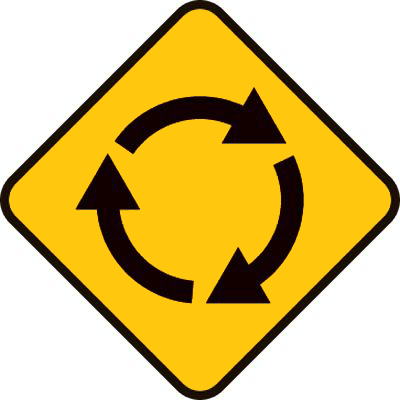

Turning left
On approach you must indicate left, and turn using the left lane, unless arrows show you can use other lanes to turn left.
You must give way to all vehicles already on the roundabout.
You must continue to indicate left as you turn.
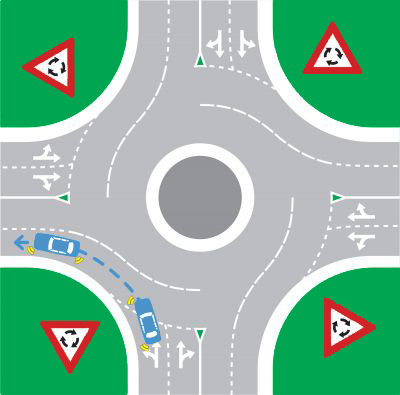
Going straight ahead
On approach, you can use any lane to go straight ahead, unless arrows show the lane is for left or right turns only.
You must give way to all vehicles already on the roundabout.
When you leave, you must indicate left, if practical to do so.
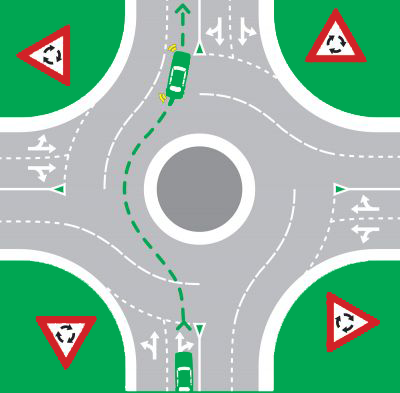
Turning right or making a full turn (U-turn)
On approach you must indicate right, and turn using the right lane, unless arrows show you can use other lanes to turn right.
You must give way to all vehicles already on the roundabout.
You must continue to indicate right as you turn. When you leave, you must indicate left, if practical.
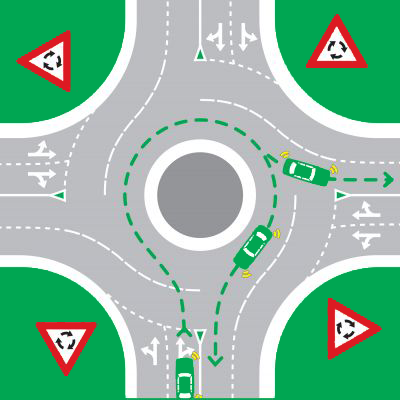
Changing lanes
Plan ahead when approaching a roundabout to avoid changing lanes when you’re in the roundabout.
If you need to change lanes, you must indicate and give way to any vehicle in the lane you’re moving into.
You can only change lanes where there’s a broken white line. You must not change lanes if the line is unbroken.
Always remember to check your blindspot when changing lanes.

Exiting
When exiting a roundabout you must signal left, if it is practical to do so. You must stop indicating as soon as you have exited the roundabout.
When you travel straight ahead on a small single lane roundabout, it may not be practical to indicate left when exiting.
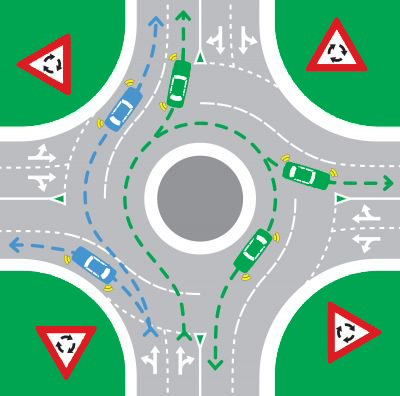
Pedestrians and roundabouts
When turning left or right at a roundabout, you do not have to give way to pedestrians unless there’s a pedestrian crossing.
However, you must always take care to avoid colliding with a pedestrian.
Bicycles and roundabouts
Look out for bicycles on a roundabout. They are entitled to use a full lane.
Bicycle riders must follow the same rules as other drivers on roundabouts. However, on a multi-lane roundabout, they can use the left lane to turn right. When turning, they must give way to vehicles leaving the roundabout.
Look out for bicycles stopped in the left lane who are giving way to vehicles leaving the roundabout.

Roundabouts video
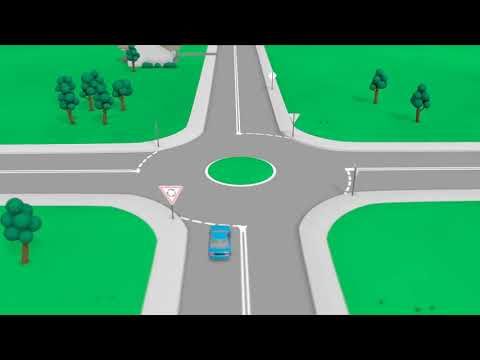
Road rules: roundabouts
Revise rules on using roundabouts in this short Transport video animation.